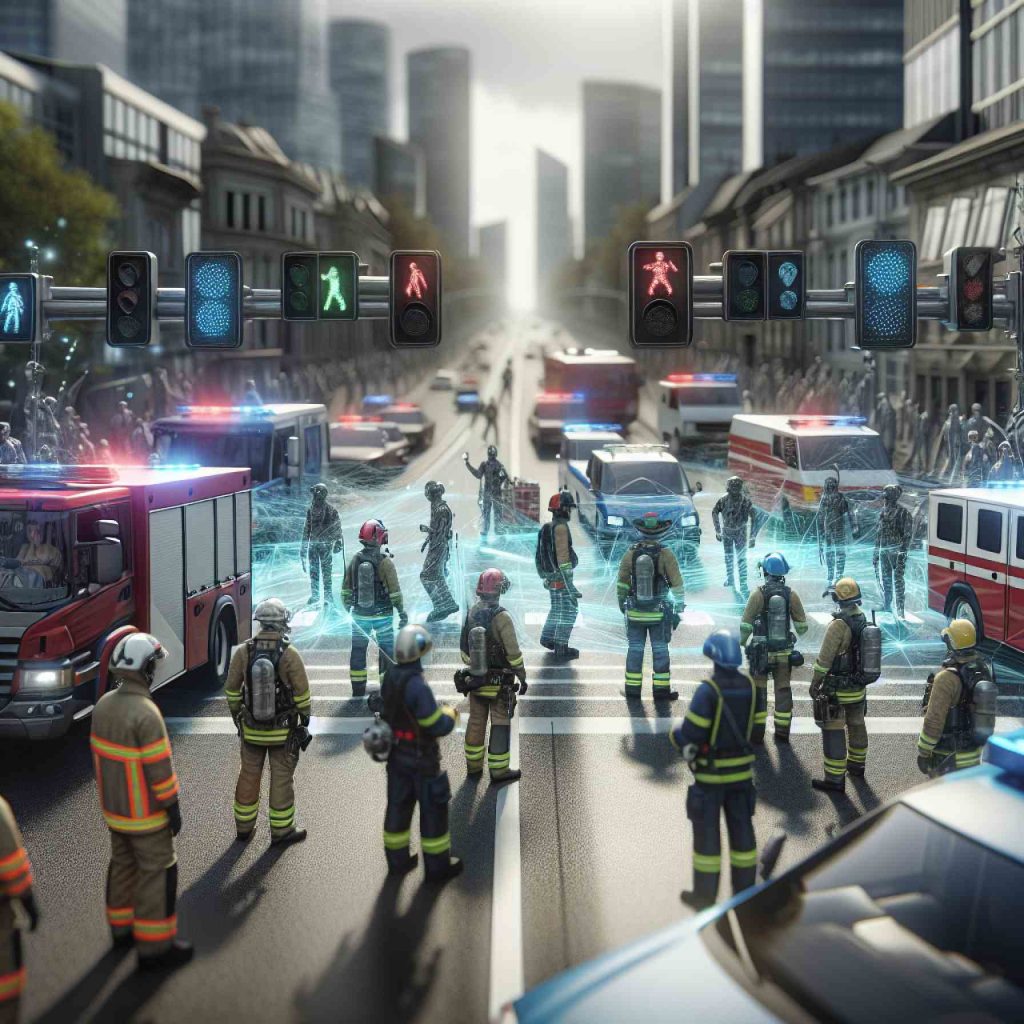
- Safety Cloud, a new initiative by Massachusetts State Police, enhances roadway safety by sending real-time alerts to drivers when emergency vehicles are nearby.
- The system operates through seamless integration with vehicles’ dashboard systems and GPS applications.
- Backed by a $135,000 grant, the initiative aims to reduce collisions with first responders, after 42 stationary cruisers were struck last year.
- Since its deployment, nearly 900,000 drivers have responded to alerts, highlighting its effectiveness.
- Safety Cloud underscores the role of technology in promoting a culture of responsibility among drivers.
- Massachusetts State Police views this as an essential step in combating distracted driving and enhancing public safety.
Flashing lights and wailing sirens once pierced the silence to capture drivers’ attention, their urgency unmistakable even amidst the din of everyday traffic. Yet, in a world enveloped by soundproofing and dominated by the allure of mobile screens, such warnings often fade to whispers. Against this backdrop, the Massachusetts State Police introduced a trailblazing initiative poised to transform roadway safety: Safety Cloud.
This cutting-edge technology, now operational in 233 marked cruisers, seamlessly integrates with vehicles’ dashboard systems and GPS applications, casting a digital safety net for unsuspecting motorists. Each time an emergency vehicle activates its lights, Safety Cloud sends instantaneous alerts to drivers, nudging them to ease off the accelerator, steer aside, and heighten their awareness. The system’s inception, backed by a $135,000 grant from the National Highway Traffic Safety Administration, represents a strategic move to curb collisions with first responders—an ambition underscored by startling statistics: 42 stationary cruiser strikes last year alone.
Armed with this innovative tool, Massachusetts State Police strides into a future where technology works as an ally in the fight against distracted driving. By the numbers, nearly 900,000 motorists have heeded early warnings of approaching cruisers since the rollout—a testament to its efficacy and promise. Officials anticipate that with cautious reflexes, countless lives can be safeguarded from the threats posed by inattentiveness.
This initiative finds its roots in a deeply personal crusade for many troopers, who have long witnessed the aftermath of these tragic encounters—stories told not just in numbers, but in the lives irrevocably altered. Capt. Eric Bernstein emphasized the human cost behind the statistics, a somber reminder of the stakes involved.
Beyond its immediate protective benefits, Safety Cloud stands as a beacon of how technology can be harnessed to enhance public safety. Colonel Geoffrey Noble of the Massachusetts State Police articulates the core of this endeavor: arming the public with information not just to react, but to act prudently. By forewarning drivers of emergency scenes, the system seeks to instill a culture of responsibility—one where slowing down and moving over become second nature, rather than reactionary gestures.
In today’s interconnected world, Massachusetts State Police has taken a pivotal step toward safer roads. Inherent in this narrative is a call to action for drivers everywhere: As technology evolves, so too must our habits. A momentary lapse in attention can spell disaster, but with tools like Safety Cloud, vigilance is now within arms’ reach—an integral reminder of the enduring power of technology to bridge the gap between caution and carelessness.
A New Dawn for Road Safety: How Safety Cloud is Revolutionizing Traffic Alerts
Overview
In an age where technology dominates nearly every aspect of daily life, Massachusetts is at the forefront of utilizing digital innovations to enhance roadway safety. With the introduction of the Safety Cloud, Massachusetts State Police aims to synchronize technology with traditional emergency protocols to prevent accidents involving stationary emergency vehicles. This initiative represents a leap into the future of road safety, where drivers are alerted in real-time to the presence of emergency responders.
How It Works
Safety Cloud operates by embedding digital alerts directly into vehicle dashboard systems and GPS applications. When an emergency vehicle activates its lights, this technology sends immediate notifications to nearby drivers, urging them to slow down and make way for first responders. The pilot initiative is operational in 233 police cruisers across Massachusetts, with plans for future expansion.
Real-World Use Cases
Motorists driving in areas where Safety Cloud is implemented receive real-time alerts that can make a significant difference in terms of reaction time. This system is particularly beneficial in urban areas with heavy traffic, where emergency vehicles might be difficult to spot until they are very close. By forewarning drivers, Safety Cloud helps diminish the risk of collisions, ensuring that first responders can reach their destinations quicker and safer.
Market Forecasts & Industry Trends
The use of connected vehicle technology like Safety Cloud is on the rise. According to MarketsandMarkets, the connected car market is expected to grow from $23.6 billion in 2021 to $56.3 billion by 2026, at a compound annual growth rate (CAGR) of 18.0%. As more jurisdictions look to adopt similar technologies, the market for these innovations is projected to expand significantly.
Pros & Cons Overview
Pros:
– Increased Awareness: Provides timely alerts to drivers, increasing reaction times.
– Enhanced Safety: Directly reduces the incidence of accidents involving stationary emergency vehicles.
– Public Education: Encourages a culture of safe driving practices.
Cons:
– Technology Dependency: Relies on drivers using compatible GPS or in-dash systems.
– Initial Costs: Implementation and maintenance could be costly to state budgets.
– Data Privacy Concerns: Potential issues related to the collection and handling of location data.
Insights & Predictions
Safety Cloud, while currently limited to Massachusetts, has the potential to set a precedent for states across the country. It may drive legislative changes advocating for the widespread adoption of such technology. As more vehicles become technologically equipped, the integration of safety systems like Safety Cloud may become standard.
Controversies & Limitations
Despite its benefits, some concerns remain about the potential for driver distraction due to notifications and the inherent reliance on technology, which can falter. Moreover, implementing this system across broader regions would require significant financial investment and rigorous data privacy measures.
Actionable Recommendations
For drivers in Massachusetts:
– Stay Updated: Ensure your vehicle’s GPS and dashboard software are updated to receive Safety Cloud alerts.
– Practice Safe Driving Habits: Treat alerts as an essential reminder to prioritize safety.
– Educate Others: Share the benefits of Safety Cloud with friends and family to promote safer road practices.
For policymakers considering similar initiatives:
– Assess Performance Metrics: Regularly evaluate the effectiveness and reception of Safety Cloud among users.
– Address Privacy Concerns: Implement robust data protection measures to protect user privacy.
– Encourage Manufacturer Collaboration: Work with automobile manufacturers to ensure compatibility with future vehicle models.
Conclusion
The introduction of Safety Cloud offers a glimpse into a future where technology not only connects us but also protects us on the roads. By melding emergency response with digital alerts, Massachusetts State Police has pioneered a tool with the potential to save countless lives. As more drivers and jurisdictions embrace this technology, the goal of achieving safer roads becomes increasingly attainable. For more updates and information on innovative road safety tools, visit the Massachusetts State Government official website.



